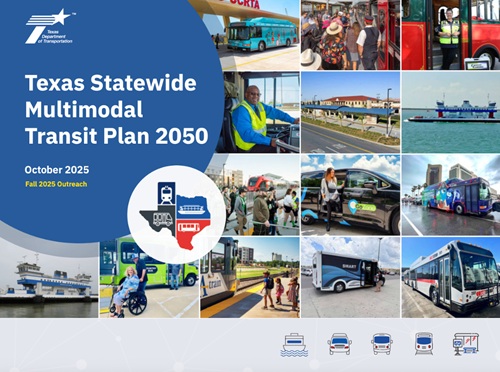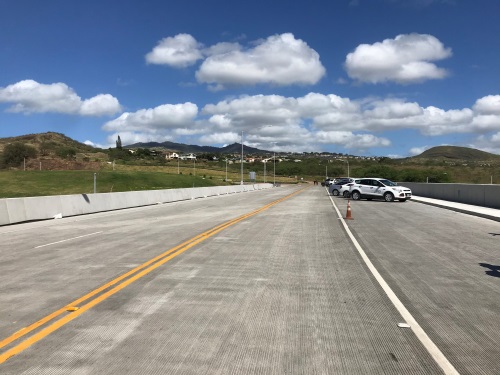What does it mean to be “net zero” in the transportation world today? When talking about carbon emissions, it refers to achieving an overall balance between emissions produced and emissions taken out of the atmosphere.
For example, the building industry has been working toward “net zero” infrastructure for years. According to the World Green Building Council, buildings are currently responsible for 39 percent of global energy-related carbon emissions: with 28 percent coming from operational emissions – from the energy needed to heat, cool, and power the structures – and the remaining 11 percent from materials and construction.
Though highway roads and structures do not have the same level of operating emissions as a building, “embodied” carbon from the construction process significantly adds to transportation’s carbon footprint. Embodied carbon is the carbon footprint of a material. It considers how many greenhouse gases (GHGs) are released throughout the supply chain. This includes the extraction of materials from the ground, transport, refining, processing, assembly, in-use and finally its end of life recycling of disposal.
The building industry now believes that embodied carbon in projects can be reduced 10 percent to 20 percent without increasing capital costs. One new study out of Sweden believes net-zero carbon emissions in construction supply chains can be reached by 2045.

But what exactly does this mean for highway and bridge construction? Many believe that policy is the starting point for significant reductions in carbon in highway projects. Globally, many countries are already requiring “net zero” infrastructure design. In Sweden, for instance, large transport infrastructure projects (roads, rail, tunnels) are required to calculate and report embodied carbon and monetary incentives awarded if embodied carbon is below a specified target.
Some state departments of transportation are already working toward similar goals. For example, the Hawaii Department of Transportation started a testing project in 2019 using a concrete mix injected with waste carbon dioxide (CO2). The CO2 is mixed into the concrete using CarbonCure technology. The resulting product traps carbon dioxide in mineral form within the concrete and improves the comprehensive strength of the material.
The test project involves a pour of 150 cubic yards of carbon-injected concrete next to an equivalent pour of standard concrete mix on an access road for the Kapolei Interchange. This test will allow the Hawaii DOT to do a side-by-side comparison of the carbon reducing mix versus a standard mix to determine specifications for the use of carbon-injected concrete for road projects in the future.
“We’ve seen the benefits to CO2 mineralized concrete and will be using it when appropriate in Hawaii’s road and bridge projects,” explained Ed Sniffen, Hawaii DOT’s deputy director for highways. “The availability of environmentally friendly materials such as carbon injected concrete is necessary for us to move forward in reducing the carbon footprint of our construction projects.”
In an interview with Smart Cities Dive, Sniffen added that the carbon-injected material has turned out to be stronger and more workable, with no increase in cost over traditional concrete. “The overall carbon savings is significant,” he said. “We reduce it overall about 1,500 pounds into the environment. Now, that doesn’t sound like a lot, but really, that equals up to one car driving 1,600 miles continuously. So, it builds up quite a bit.”
How can such “embodied” carbon in highway construction be reduced? In general, highway designers can use Life Cycle Analysis based tools to determine the environmental footprint of a whole project and search for ways to reduce life cycle GHG emissions and other impacts through strategies such as:
- Ensuring efficient use of materials (i.e. “right-sizing”)
- Selecting materials with more efficient manufacturing processes
- Minimizing transportation impacts through use of local materials
- Using robust materials that require less maintenance, repair, and refurbishment
- Choosing materials that can be reused or recycled instead of landfilled
Although there may be a learning curve and increased costs initially to incorporate embodied carbon reduction into construction decisions, it appears that the incremental costs of incorporating this analysis is comparatively small for the potential benefit it could provide. Complicated decisions and life cycle analysis must be done from the planning phase of the project through design and construction to significantly reduce embodied carbon and hit the “net zero” goal. In the future, these efforts will be driven by government policy and environmental stewardship of firms and contractors. It is inevitable that the wave of “net zero” goals in the building industry will continue to transition into the highway industry as well.
 Infrastructure
Infrastructure
TxDOT Prepares for Future with Statewide Transit Plan
December 10, 2025 Air Quality
Air Quality


